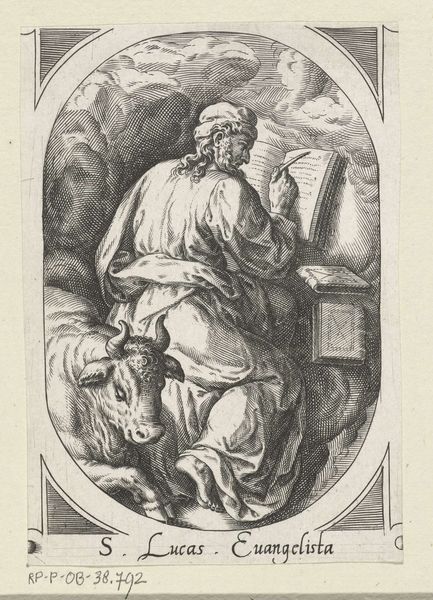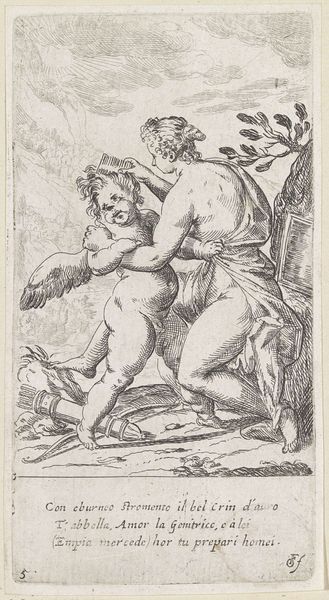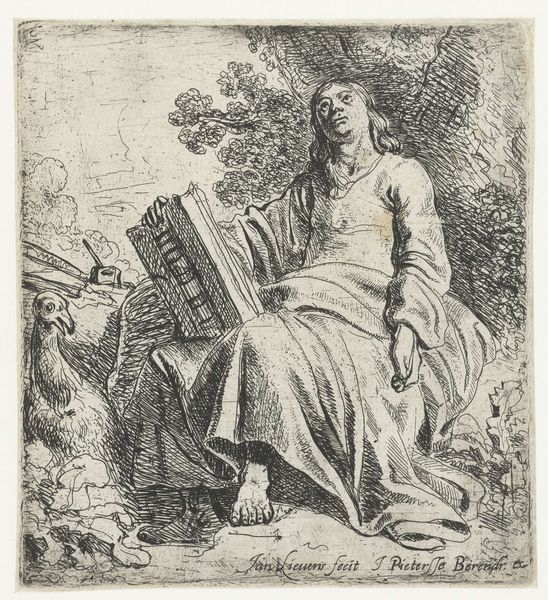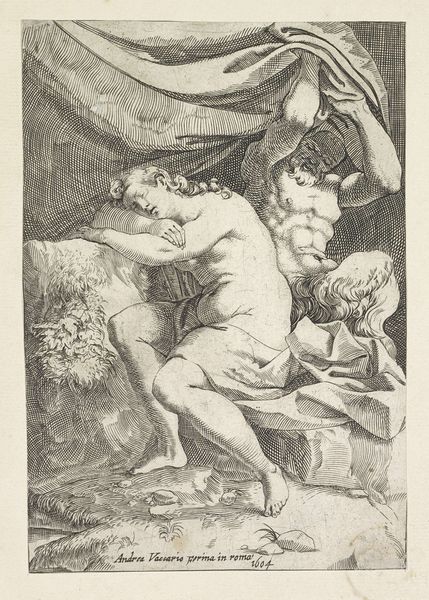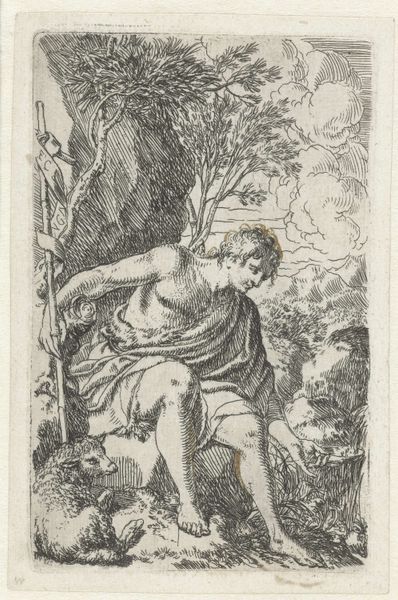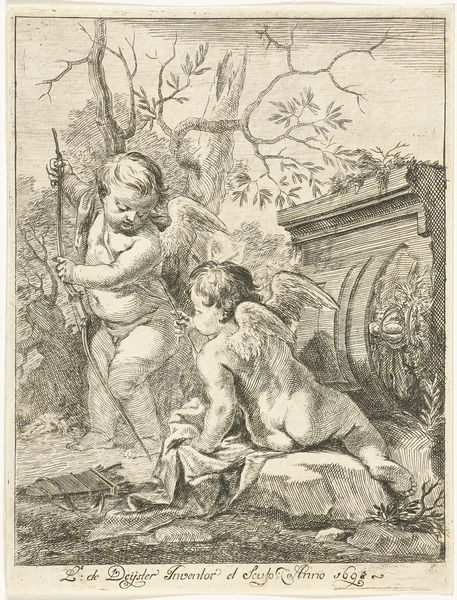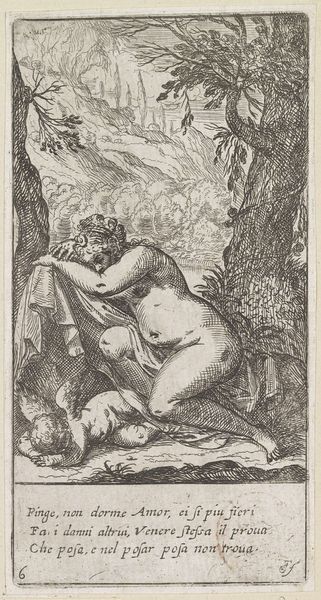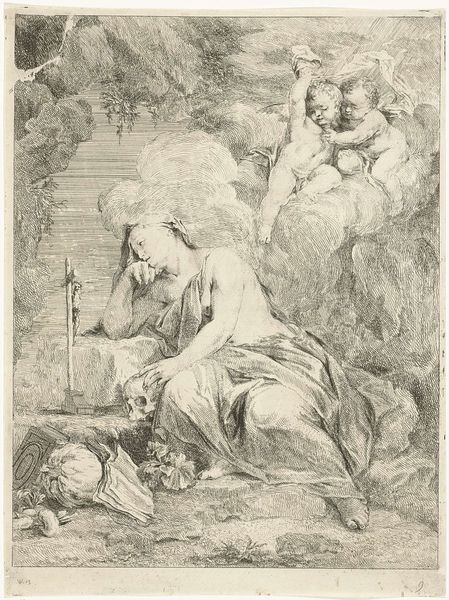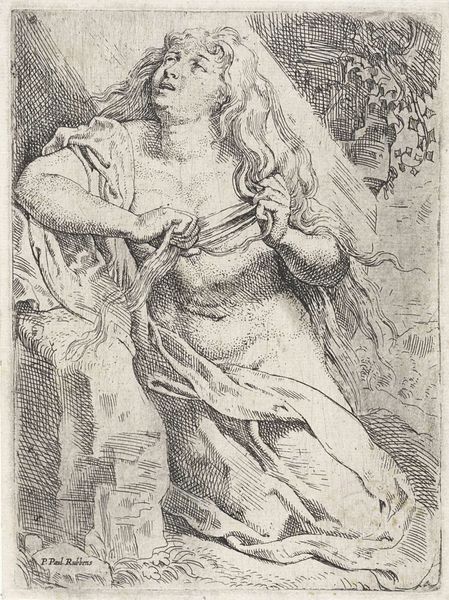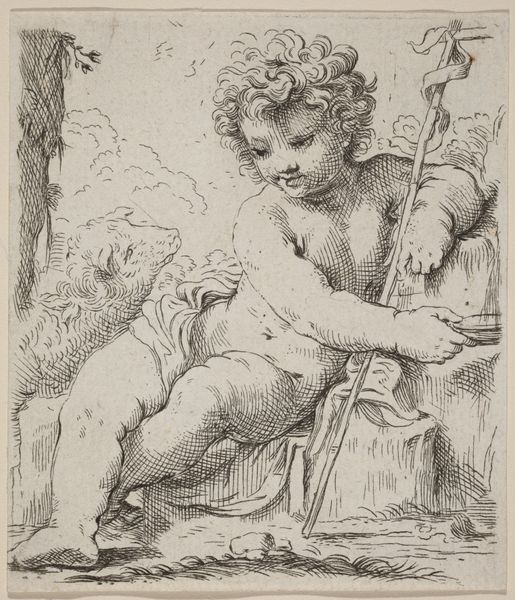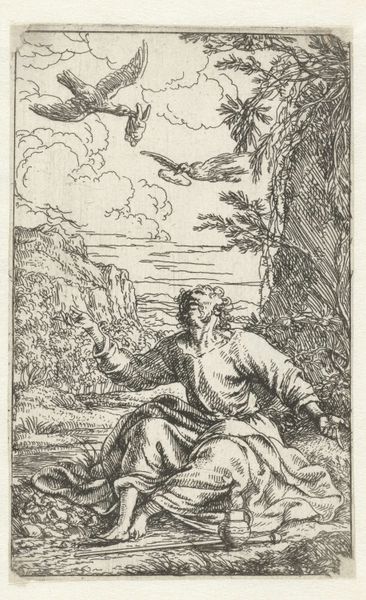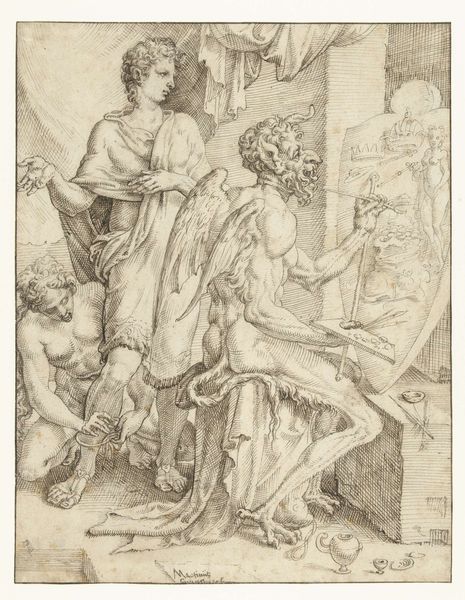
engraving
#
portrait
#
baroque
#
figuration
#
portrait drawing
#
engraving
Dimensions: height 153 mm, width 109 mm
Copyright: Rijks Museum: Open Domain
Curator: This engraving, whose creation is dated sometime between 1636 and 1679, is held here at the Rijksmuseum. Titled “Vrouw met het portret van een man in haar hand,” or, in English, “Woman with a portrait of a man in her hand,” it appears to be an anonymous work. Editor: Well, right away, what strikes me is the contrast. You have this very lush, almost sensual depiction of the woman, and then this smaller, more reserved portrait she’s holding. It feels…intentional, this juxtaposition of openness and restraint. Curator: Absolutely. Consider how female identity was often mediated through male representation during this period. The act of holding his image becomes a way for the woman to exert agency, even subvert traditional expectations. The male gaze, so dominant, is here held, literally, in her hands. Editor: So you're saying her gaze becomes active rather than passive, because of her possession of the man's image? I’d add that the line work itself creates that division, the varying thicknesses and densities defining different planes of focus and emphasizing their separate natures. It feels like they’re two distinct visual ideas brought together. Curator: I agree. The artist could also be commenting on the performative aspects of identity, suggesting how both gender and social roles are constructed, mediated by power dynamics in society. Notice the details of her clothing, hairstyle—ornaments of feminine identity—staged, not inherent. Editor: It’s so interesting you point that out, as from a strictly compositional viewpoint, those ornaments serve as connecting lines. The curves of her hair find echoes in the draping fabric, which in turn responds to the more geometric shape of the portrait frame. It visually bridges these elements, this deliberate staging contributing to the artwork’s balance and flow. Curator: Yes, this highlights how portraits function within the dynamics of class, power, and social status. Even the act of commissioning or possessing a portrait implies a level of economic and social privilege that shapes the interpretation. The relationship, you might say, is completely mediated through power structures. Editor: It's remarkable to realize that even in a relatively simple scene, formal and cultural analysis create new meanings in Baroque portraiture. Thank you. Curator: Likewise.
Comments
No comments
Be the first to comment and join the conversation on the ultimate creative platform.
